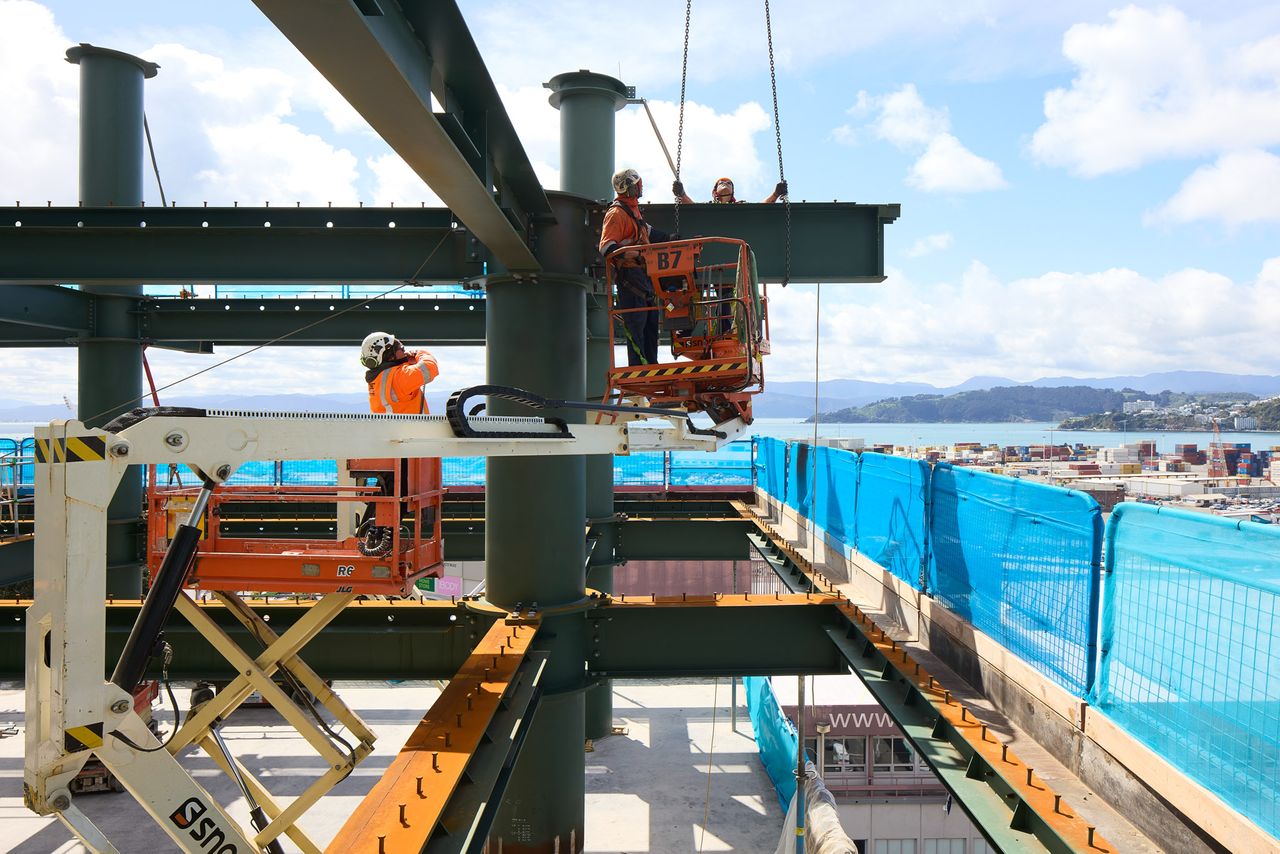News & Insights
Tackling the Earthquake Prone Building Challenge
Author
Date
- 2025 January

The Earthquake-Prone Building (EPB) challenge is one of the most pressing matters currently facing New Zealand’s property sector. Not only because it affects the safety of our communities but also due to its economic, regulatory, and social impacts. The significance of this issue, and the urgency to address it, is on par with other major industry challenges, including the Christchurch earthquake recovery, the leaky buildings crisis, and tackling New Zealand’s water infrastructure deficit.
For Wellington, the stakes are exceptionally high.
While the risk of a significant earthquake is well known, what is less well understood is the effect of the aging building stock and the sheer quantity of buildings with low seismic ratings. According to current estimates, over 1,300 buildings are on the EPB Register within the Wellington region alone. The issue, however, is not isolated to the capital, as many centres are situated in seismically compromised locations, particularly along the Southern Alps and East Coast of the North Island.
Approximately 7,500 buildings are on the national register, representing billions of dollars of assets that must be addressed.
Current legislation
Following the Christchurch Earthquakes, the Building (Earthquake-prone Buildings) amendment Act was passed to provide a framework to identify and remediate buildings with significant seismic risk. The legislation recognised the challenge of identifying acceptable seismic risk and quantified this as ‘one-third’ of the current building code. This was a practical solution at the time, representing a simplified yardstick that balanced seismic risk with the time and resources required to improve these buildings.
However, over time, the quantum of buildings falling below this marker has tipped the scales. The broad application of the EPB standards has resulted in such a large number of buildings being identified as earthquake-prone that there are not enough resources (or capital) for owners to meet their obligations.
The Minister for Building and Housing has recently announced a review of the earthquake prone building settings, an action RCP fully supports.
The Problem
While the scale of the EPB issue is enormous, it also impacts the wider industry more broadly, including building owners, contractors, designers and regulators. The problem and its solutions are often considered only in terms of the individual components, losing perspective of our interrelated industry.
 To consolidate these issues, we have compared the problem to a puzzle.
To consolidate these issues, we have compared the problem to a puzzle.
The solution must consider all aspects of this problem while acknowledging that it can not all be solved at once. We believe a structure that allows these issues to be addressed in a logical sequence would give the industry the best opportunity to respond effectively, ultimately resulting in fewer people being affected when a major event occurs again.
Prioritisation
 Most owners are capable of commissioning a detailed seismic assessment (DSA) report, with most having done so already.
Most owners are capable of commissioning a detailed seismic assessment (DSA) report, with most having done so already.
However, some owners find their biggest challenge is understanding what to do next. The advice they receive on next steps is often presented from an engineering viewpoint – generally a ‘strengthen’ or ‘demolish’ approach. These options are usually untenable, frequently overlooking complexities, missing risk management, or ignoring project delivery and commercial realities.
We believe the system needs to offer more time to support owners in taking the next step, but this needs to be balanced to avoid pushing out deadlines indefinitely. The best way to achieve this would be to develop a prioritisation framework that addresses the highest-risk buildings first, with additional time provided to those with less risk. For example, an office building with hundreds of occupants would be given less time than a storage facility with far fewer.
This approach provides owners with choices, including additional time, but it also gives them the flexibility to reduce the holistic risks associated with their assets. This could include removing people from the risk (e.g. not using part of the building), strengthening a specific component (e.g. a parapet) or reducing the occupancy of the building altogether (e.g. changing the use to a lower occupancy).
Several very low-risk buildings have been included in the EPB register, many of which pose little to no risk. Unfortunately, the only mechanism these owners have is to complete a DSA and/or complete strengthening - often at a cost comparable to (or more than) the building’s value. When scaled across the country, we see thousands of owners trying to take these same steps, all at the same time.
The process could be further improved if it was supported by a centralised framework that building owners were required to use. This could be an online portal that tracks and ensures building owners are making progress in remediating their buildings. The prioritisation framework could be built in, allowing owners to provide risk information such as occupancy and mitigation measures that have been implemented.
The system could further be improved to support building owners, such as guidance documents and available funding mechanisms. The centralised system would also reduce pressure on councils managing the significant administrative and enforcement burden.
Acceptable Seismic Risk
A prioritisation approach naturally leads to the question of what ‘acceptable seismic risk’ is. This topic has received significant attention lately with the sheer number of highly valued buildings, both public and private, that have been identified as earthquake-prone.
Both the engineering community and the wider public are questioning this standard and how it is applied. This is a challenging but reasonable question and should be considered as part of the EPB review.
While this is a decision for lawmakers in consultation with the industry, we believe a simple standard that avoids interpretation is key. Continuing the one-third building code standard could still be relevant, with simply adding a prioritisation overlay being sufficient. This would allow time for the owners to plan and the industry to accommodate the workload. It also provides the opportunity to remove those very low-risk buildings.
Summary
Solving this problem overnight is impossible, but the current system must improve.
In our view, prioritisation combined with a centralised framework is the key. Once this is in place, the industry can focus on other areas, such as funding mechanisms, market capacity and regulations.
Having been at the forefront of the Christchurch and Kaikoura rebuild responses, this is a topic RCP is passionate about, and we look forward to continuing to participate in the earthquake-prone building review process.
If you share our passion for addressing this critical issue or would like to discuss this topic further, please contact:
Scott Evans


